Overwintering petunias – the experts’ guide on how to keep petunias alive during winter
Here’s all you need to know about the how and the when
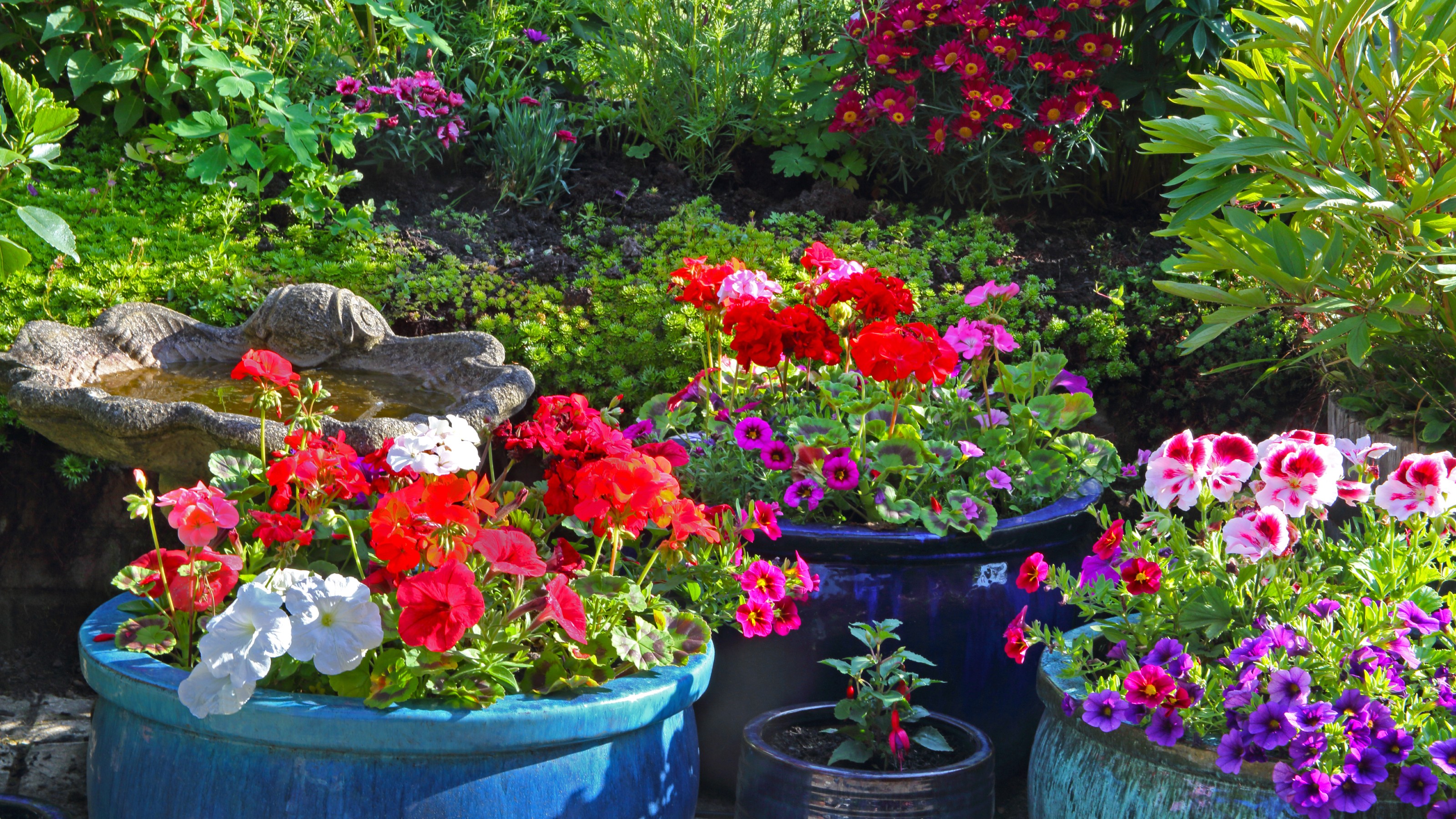

The bright, vibrant-flowered petunias are often treated as annual plants, discarded upon the arrival of the first winter frost and simply rebought next spring season. But that doesn’t mean you can’t have a go at overwintering petunias, especially if you own one of the fancier varieties.
Petunias are one of the best hanging basket flowers but they can be just well planted in your garden borders. So if your plant doesn’t live in a pot for most of the year, you will need this step-by-step guide to how to keep your petunias alive during winter. But you don’t have much time left to get this done...
A guide to overwintering petunias
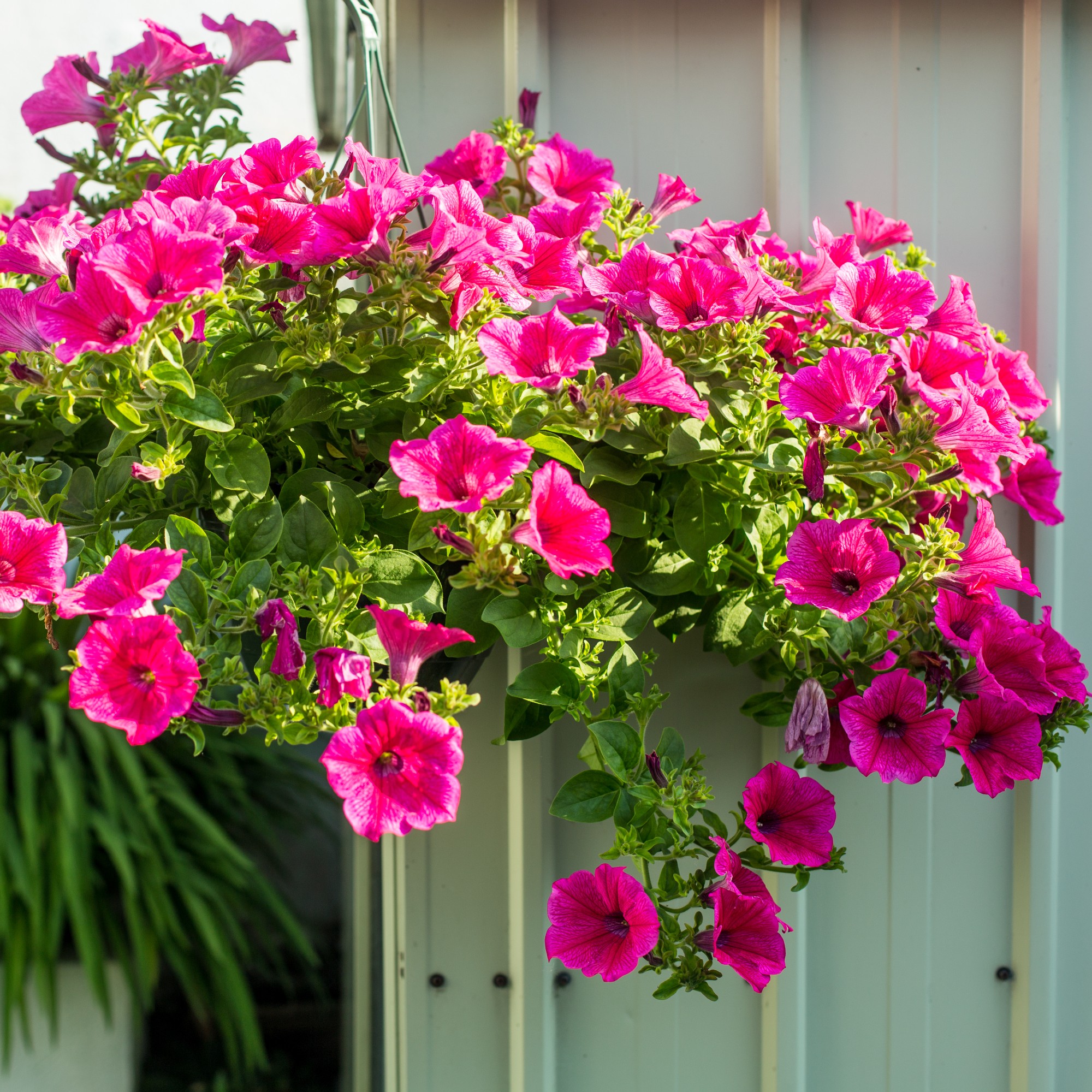
‘Petunias are normally treated as annuals because they can't tolerate frost, and aren't hardy,’ says Steve Chilton, garden expert at LeisureBench. ‘Because of this, you should start overwintering petunias when the temperatures begin to drop in the autumn, which is usually around the end of September to early October.’
That covers the when to overwinter your petunias part, which is just important to knowing the how. And as you can see, you should be getting to it right about now (once you've deadheaded your petunias, of course) to preserve your plant through the winter months.
So now onto the how.
What you’ll need
- Pruning shears or secateurs like these Homebay Heavy Duty Garden Secateurs at Amazon
- A pair of gardening gloves like these PROGANDA 3 Pairs Colourful Superior Grip Gardening Work Gloves at Amazon
- Shallow pots or trays like these Plastic Grow Bag Trays at Amazon
- Plant grow lights like this Garpsen 80 LEDs Full Spectrum Led Plant Grow Light at Amazon - this is only necessary if you're keeping your petunias non-dormant
How to overwinter petunias
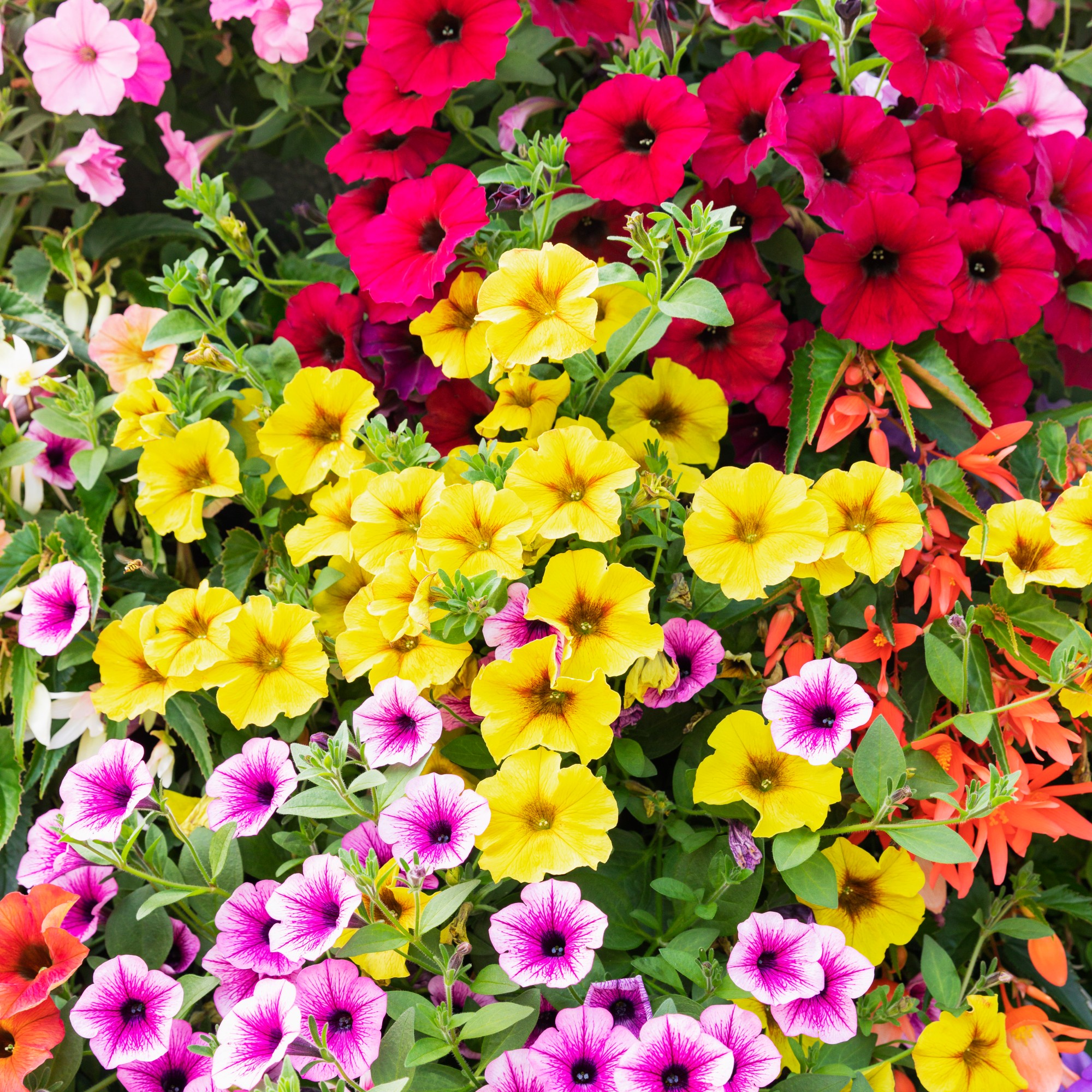
Similarly to knowing how to overwinter begonias or any other pretty-flowered plants, it’s important to have the technique of overwintering your petunias down. If your petunias live in your borders, then you’ll need to dig them up first.
‘Dig up the petunia plants carefully, ensuring that you don't damage the roots at all. Make sure to shake off excess soil from the roots so they're not clumpy,’ advises Steve.
Get the Ideal Home Newsletter
Sign up to our newsletter for style and decor inspiration, house makeovers, project advice and more.
‘Choose healthy plants,' he exlpains. 'Weak or diseased plants probably won't survive. Before you bring in the petunias for overwintering, make sure to inspect the plants for any pests. You should treat any infestations or diseases before storing them to prevent spreading to other overwintered plants, or dispose of the plant if it's unfixable.’
At this point, you need to decide whether you want to leave your plant to be dormant during the winter or keep growing when brought inside. The former is the more traditional and much easier way. But the latter can be done, too.
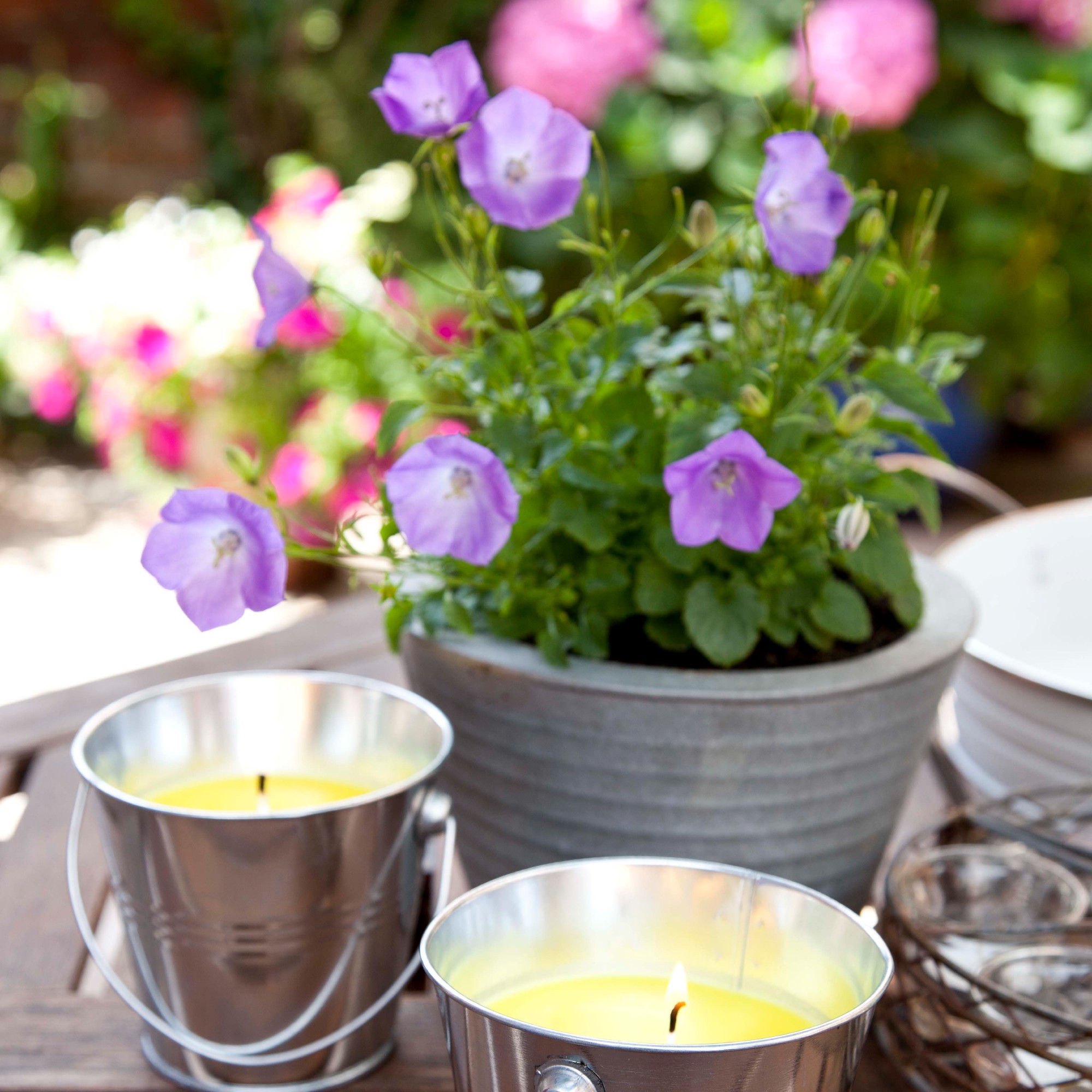

Steve is a passionate and knowledgeable garden expert with several years of experience within the field and has developed strong expertise for all things nature and plants. Steve is a keen educator and loves to share this knowledge with others. He strives to simplify complex garden practices and encourage eco-friendly gardening.
Overwintering dormant petunias
‘Prepare a cool, dark location to store the petunias over the winter. A garage or even a cool windowsill can work. The location should be around 4-10°C to promote the plant's dormancy,’ Steve explains.
They should be stored in a shallow tray or pot with roots covered in moist but not wet soil. That’s pretty much it. All that’s left is check on the soil once in a while to ensure it remains moist.
In February, you can start bringing them out of their dormant state again. ‘In about mid-February, place them in front of the sunny window again and give them a drink of water,’ says Jack Sutcliffe, co-founder of shed manufacturer Power Sheds.
‘Wait until spring to take them outside, at which time you should harden them off or gradually transition them to outdoor conditions as if they were seedlings.’
Overwintering non-dormant petunias

‘Full sun and warmth are the critical factors that prevent petunias from becoming dormant,’ says Jack.
Of course, both of these are hard to come by during winter, which is why you will need to create these conditions artificially with grow lights.
‘Find a nice, warm place to situate your petunias inside your house — the sunnier, the better. Invest in a grow light so that the petunias are exposed to light for about 10 hours each day,’ Jack says.
Maintaining your petunias ‘awake’ through winter does involve quite a bit of upkeep as you need to ‘continue to water and fertilise the petunias as if it's the middle of summer.’ And pruning also needs to be done continuously to stimulate growth and prevent dormancy.
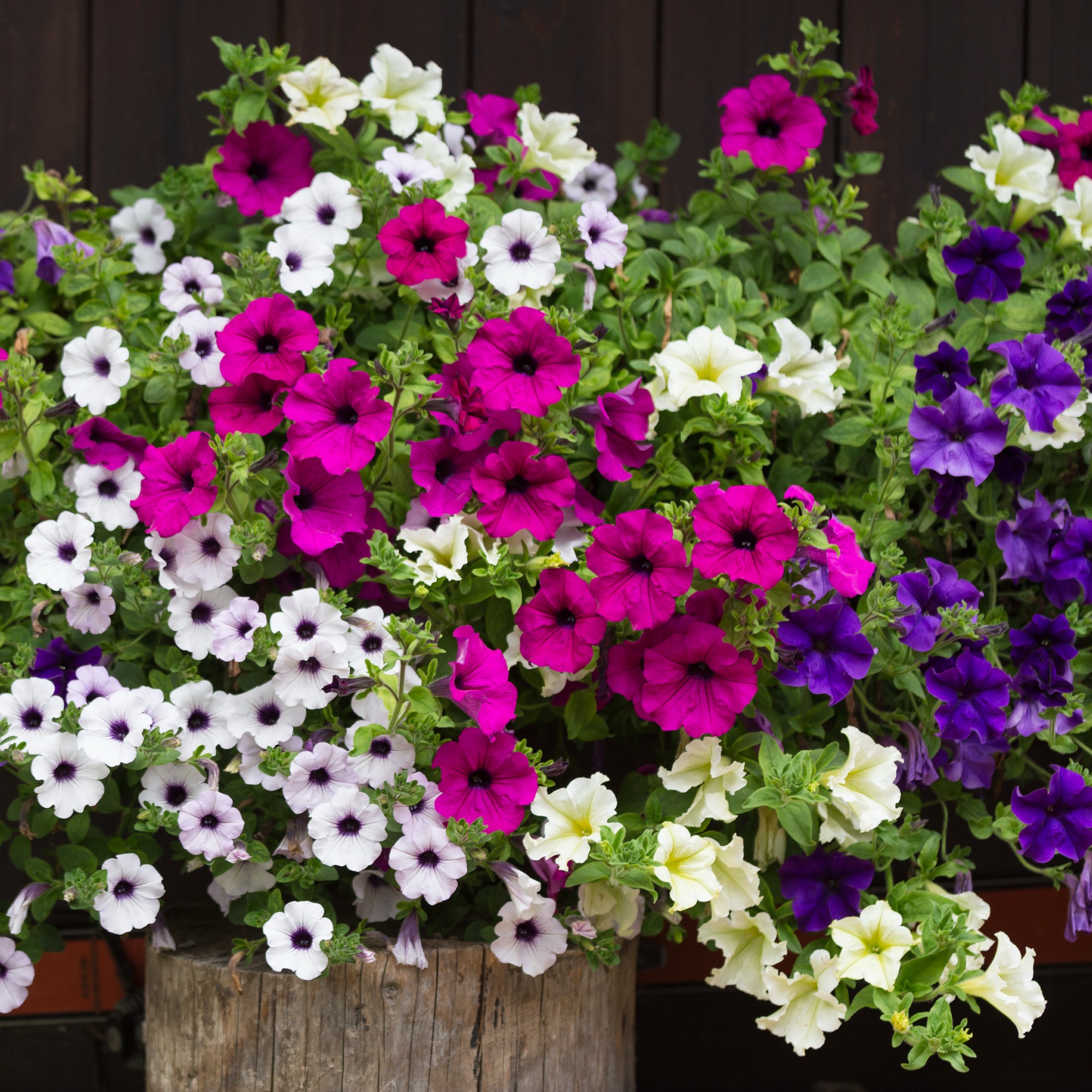
Can petunias be kept over winter?
Even though petunias are usually treated as annual plants by gardeners as they are very susceptible to frost and many don’t think it worth the trouble to overwinter them, petunias can still be overwintered and kept alive during winter.
And it’s fairly easy too. Just keep them in a dormant state in a dark and cool place such as a basement or a garage, stored in shallow trays or pots and covered in moist soil. And next spring, they should bounce back when replanted.
Do petunias need cutting back?
If you’re going to overwinter your petunias, it’s a good idea to trim them back.
‘Trim back the petunias plants so that they're around 10cm above the line of soil,’ recommends garden expert Steve.
One more thing to remember is that petunias are not fans of humidity so keep your best humidifier away.
‘Other plants sometimes need supplemental humidity when grown indoors, but petunias actually prefer low humidity,' advises Jack from Power Sheds. 'If you run a humidifier for other indoor plants, try to place your petunias in a separate room or away from the humidifier on the other side of the room.'

Sara Hesikova has been a Content Editor at Ideal Home since June 2024, starting at the title as a News Writer in July 2023. She is now also the Ideal Home Certified Expert in Training on Furniture, and so far has tested 80 different sofas.
Graduating from London College of Fashion with a bachelor’s degree in fashion journalism in 2016, she got her start in niche fashion and lifestyle magazines like Glass and Alvar as a writer and editor before making the leap into interiors, working with the likes of 91 Magazine and copywriting for luxury bed linen brand Yves Delorme among others.
-
 5 signs you’ve taken decluttering too far — and how you can pull yourself back, according to organisation experts
5 signs you’ve taken decluttering too far — and how you can pull yourself back, according to organisation expertsYou might have to start resisting the urge to purge
By Lauren Bradbury
-
 What is the Party Wall Act 3m rule and is it something you should be worried about? This is what the experts say
What is the Party Wall Act 3m rule and is it something you should be worried about? This is what the experts sayDon't get caught off-guard by the Party Wall Act 3m rule — our expert guide is a must-read
By Natasha Brinsmead
-
 Shoppers can’t get enough of The Range’s lemon tree, but I’ve found an even cheaper bestseller at B&Q - it’s perfect for a Mediterranean look
Shoppers can’t get enough of The Range’s lemon tree, but I’ve found an even cheaper bestseller at B&Q - it’s perfect for a Mediterranean lookWelcome the summer with this glorious fruit tree
By Kezia Reynolds